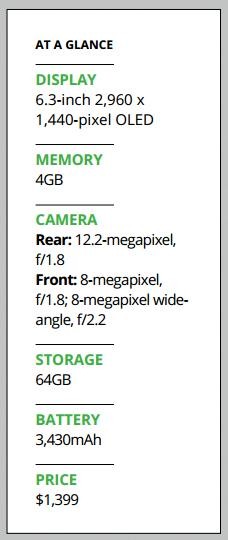Google Pixel 3 XL


Google Pixel 3 XL
If I had to describe Google’s Pixel 3 and Pixel 3 XL smartphones with one word, it would be competent. They don’t dazzle with their exquisite design or wow you with a gaggle of four cameras, but that doesn’t change the fact that they still deliver a lot of what you’d expect from a flagship smartphone today.
The Pixel 3 phones also feel more premium in hand than their predecessors. I’m not a fan of all-glass backs, but now that Qi wireless charging has arrived on the Pixel 3, Google has finally ditched the metal body of the Pixel 2. However, instead of a single pane of glass that’s slick and shiny from top to bottom, Google has sanded the bottom three-quarters or so of the back to produce a lovely matte finish.
I dislike glass backs mainly because of how reflective they are and how easily they attract fingerprints, but Google’s approach seems to have addressed these concerns. The matte surface also comes close to approximating the feel of metal, which is quite nice.
In addition, the Pixel 3 XL is more durable as well. They now sport an IP68 rating, compared to IP67 on the Pixel 2, which means they can be submerged up to 1.5m underwater for up to 30 minutes.
On top of that, the Pixel 3 now comes with a security chip custom-designed by Google called the Titan M. The chip protects your log-in credentials, disk encryption, app data, and the integrity of your OS code itself. It also works in tandem with Android and the Pixel’s hardware to verify important transactions like fund transfers and mobile banking.
Another point that must be mentioned is how much Google has improved on its display. It now uses a flexible OLED panel that boasts nice contrast levels and good viewing angles. It’s simply excellent, and the new Adaptive mode offers more vivid colors that are still more natural than Samsung levels of retina-searing contrast.

The dual front-facing speakers are also much louder than the setup on the Pixel 2 phones, and the sound signature is also markedly different. There’s still obvious distortion at maximum volume, but compared to the Pixel 2, the mids do sound a lot clearer and more prominent on the Pixel 3.
The similarity with the Pixel 2 opens Google up to accusations of stagnation and falling behind its competitors in the design department. Phones like the Samsung Galaxy Note9 and the iPhone XS do feel more refined and elegant, and the Pixel can feel a little rough around the edges in comparison.
The notch is also super polarizing. It is narrow, but it’s also really tall and ends up sort of invading the screen in a way that some may consider bothersome. I’m personally not troubled by this, and I think the notch is a lot less offensive in person than in pictures, but I can see why some folks might be unwilling to put up with it.
That said, Google is primarily still a software company at heart. It’s not touting super obvious hardware improvements like more cameras or a custom-designed chip called something like the A12 Bionic, but that’s because many of the upgrades are bundled into the software.
For instance, the camera now sports a bunch of new features, including Top Shot, Super Res Zoom, and Night Sight. Top Shot can be a lifesaver when someone accidentally blinks in a picture, and it will surface alternate shots that it captured before you hit the shutter button. Super Res Zoom helps make up for the lack of a telephoto lens by recreating detail in your zoomed in shots. The latter is also a product of burst shooting and a merging algorithm, and even though it can’t quite match up to true optical zoom, it’s a really good effort.
Put simply, the Pixel 3 camera improves on the Pixel 2’s in important ways. It is excellent, even in low light, and it again has a real chance of grabbing the title for best smartphone camera.
The dual front cameras are pretty neat as well. The second wide-angle lens can really help you fit more friends into the frame, and it’s the one thing that Google can’t mimic using software. There’s also a new Photobooth mode that can snap the selfie shutter when it detects your smile, which sounds pretty useful, if it works as advertised.
Battery life is also as solid as ever. The Pixel 3 XL is more than capable of lasting me through a full day of moderate use and then some, even though the battery is slightly smaller than that on the Pixel 2 XL.
Finally, Android Pie runs swimmingly on the Pixel 3 XL. This is probably the most optimized Android phone you can buy, and everything feels fast and fluid with nary a stutter.

The 3.5mm headphone jack is gone for good.

The phone’s notch is the height of two status bars.


CONCLUSION
Google has proven itself a great innovator on the software front, and the Pixel 3 XL offers what may be the best experience on Android.
PICTURES GOOGLE























